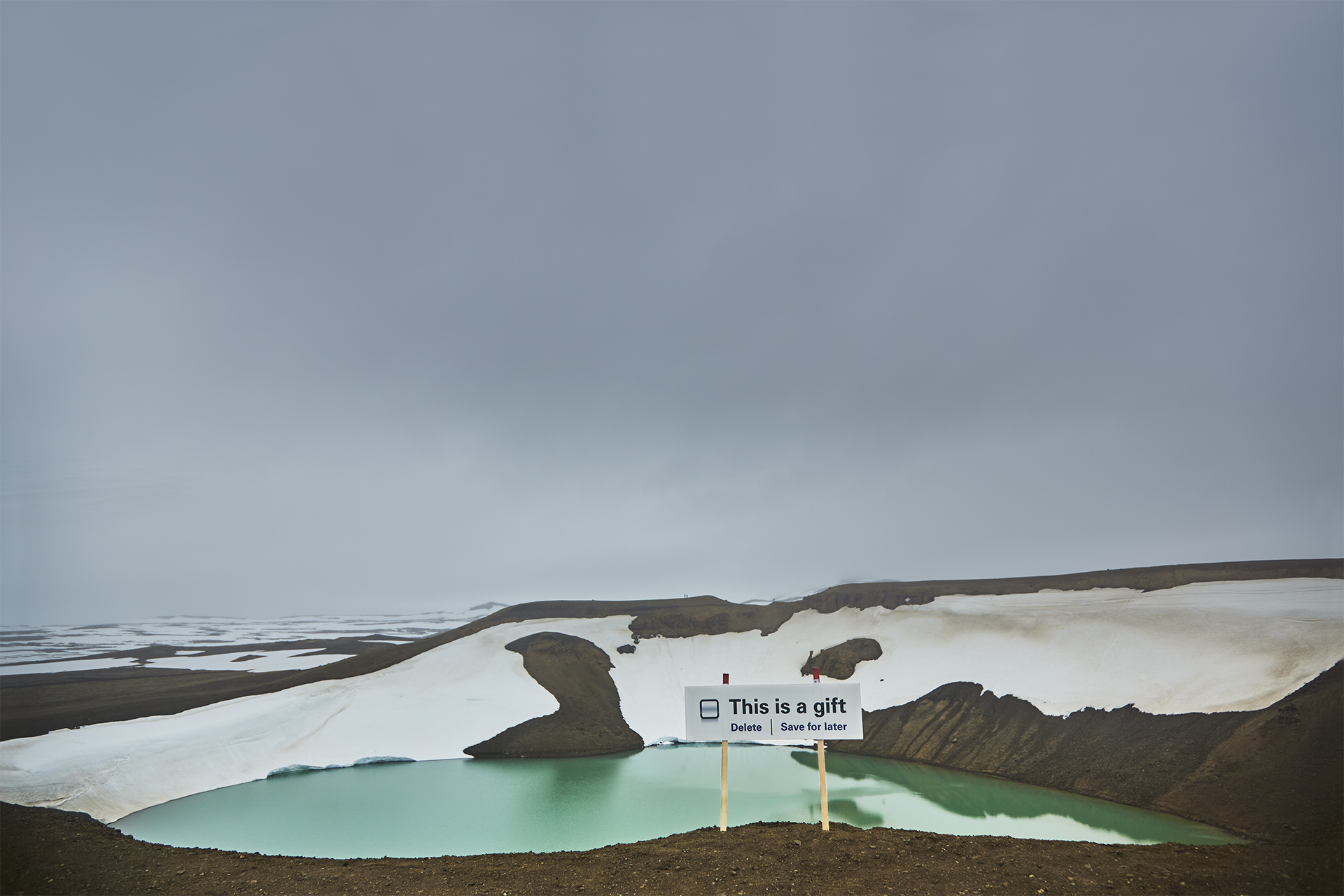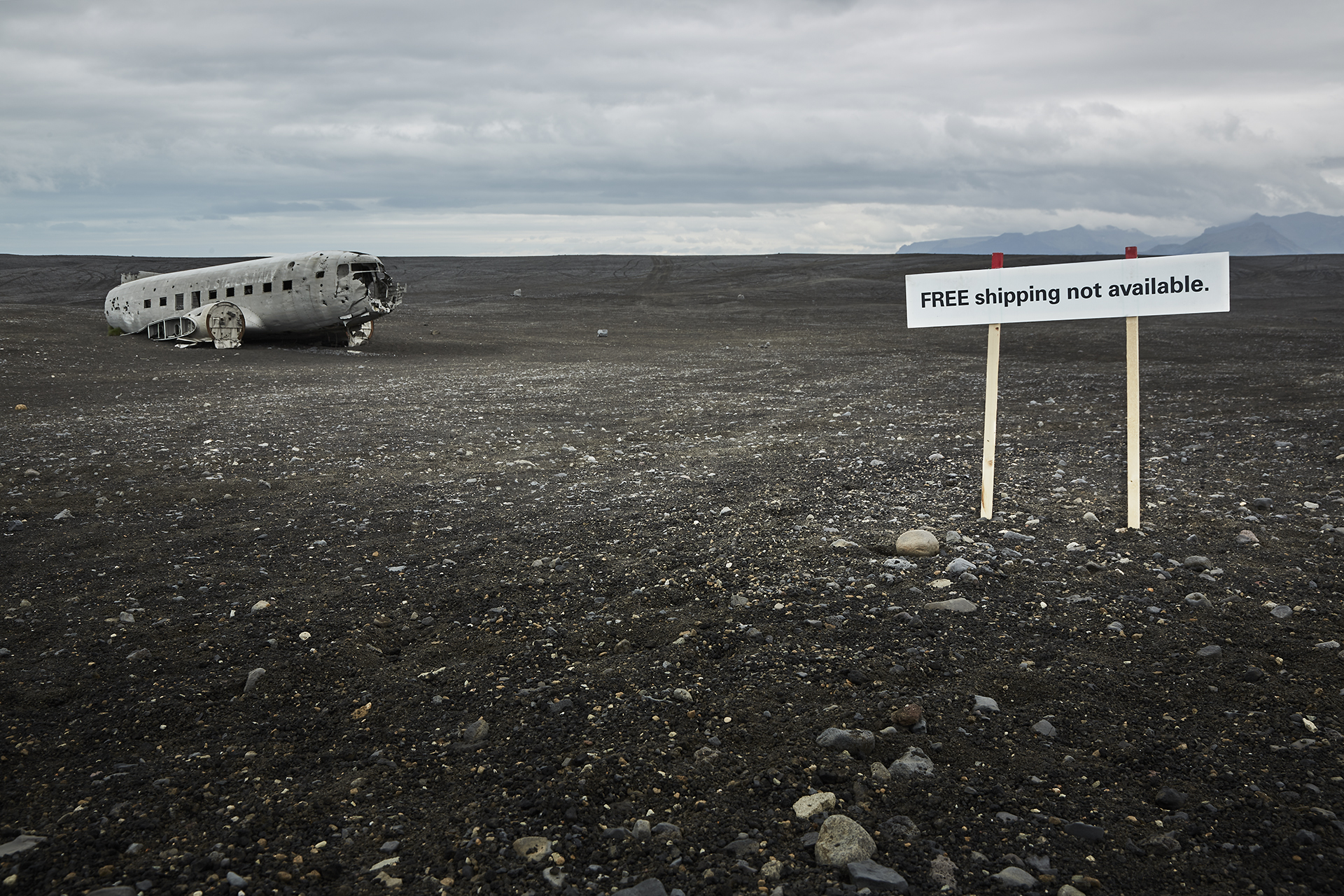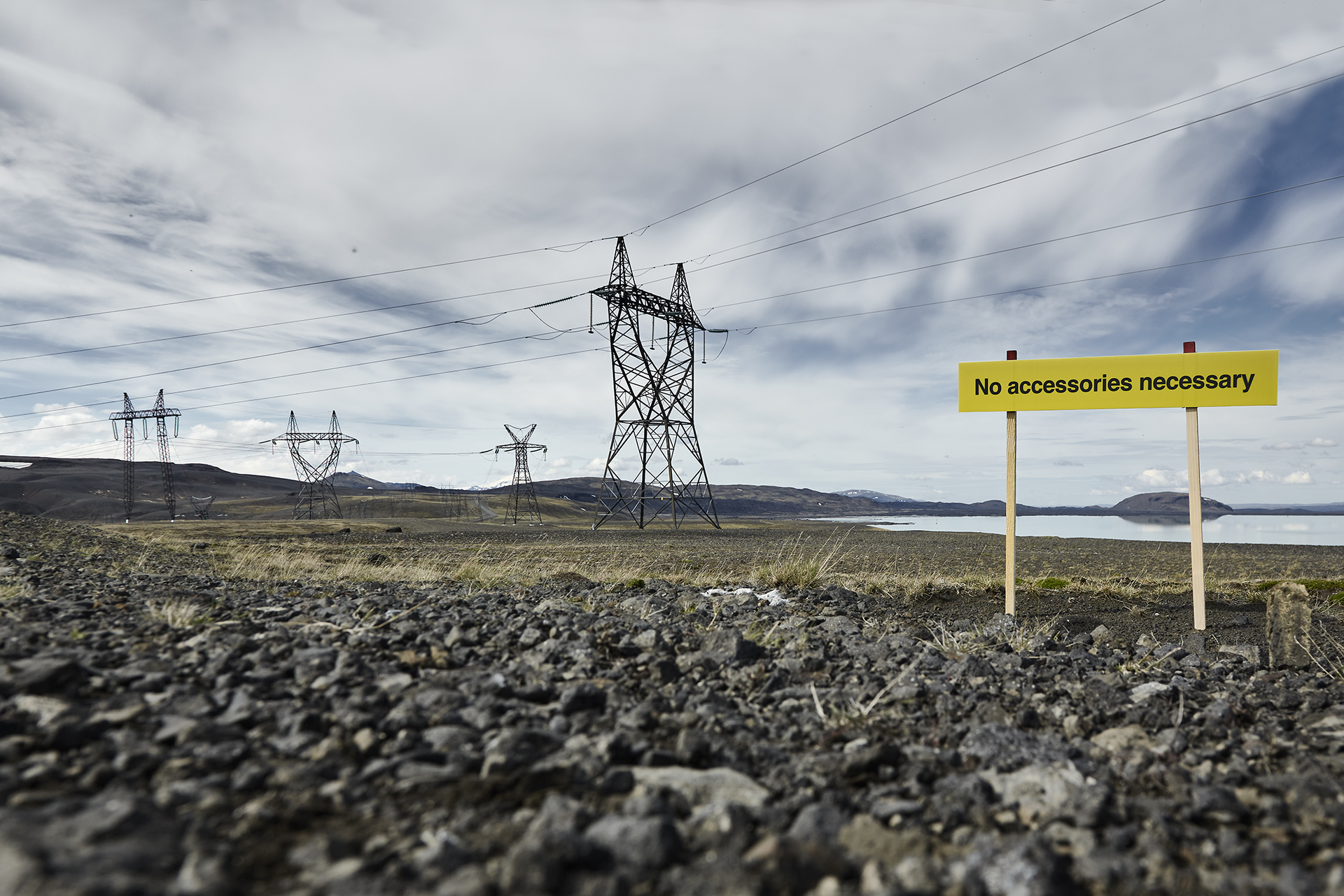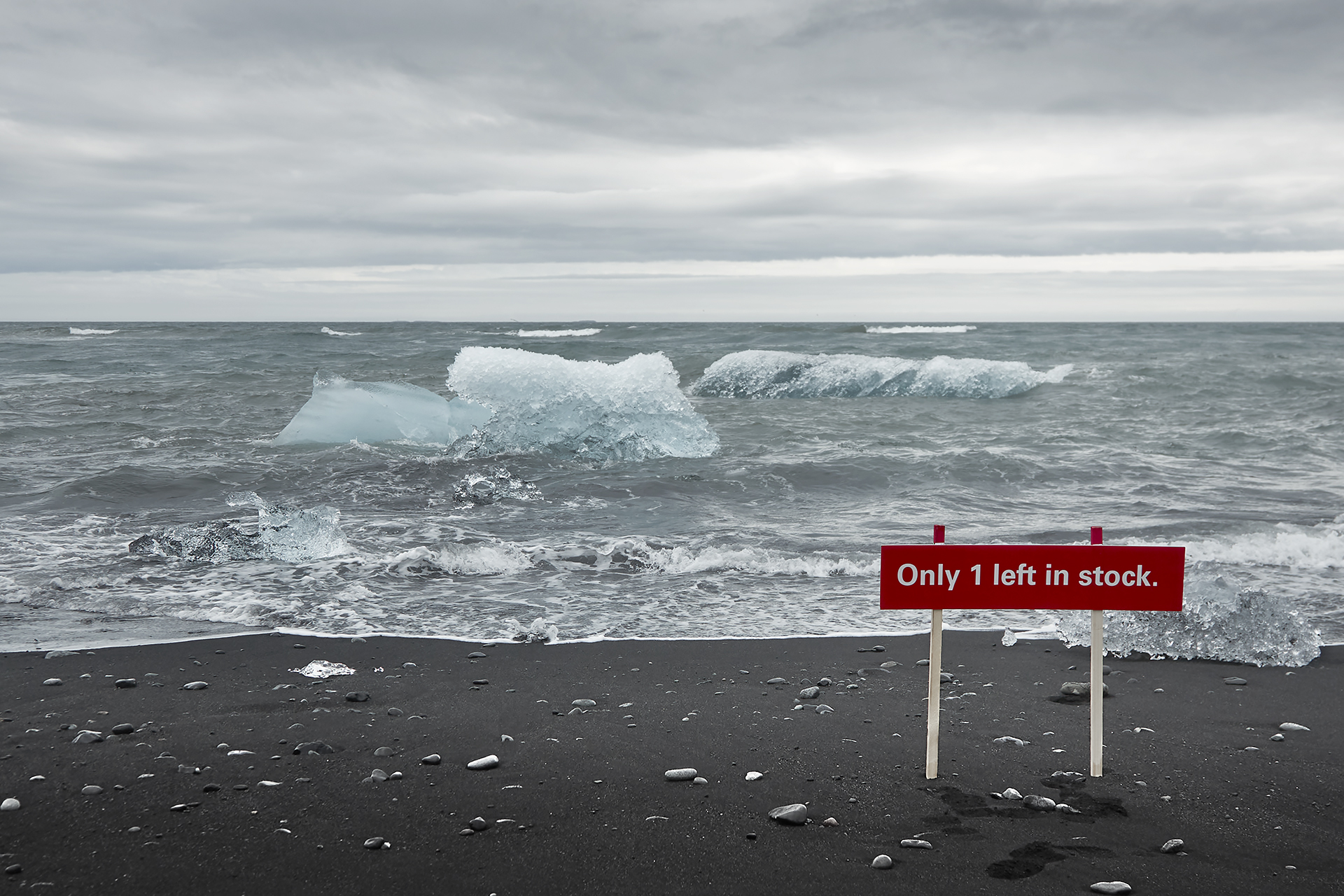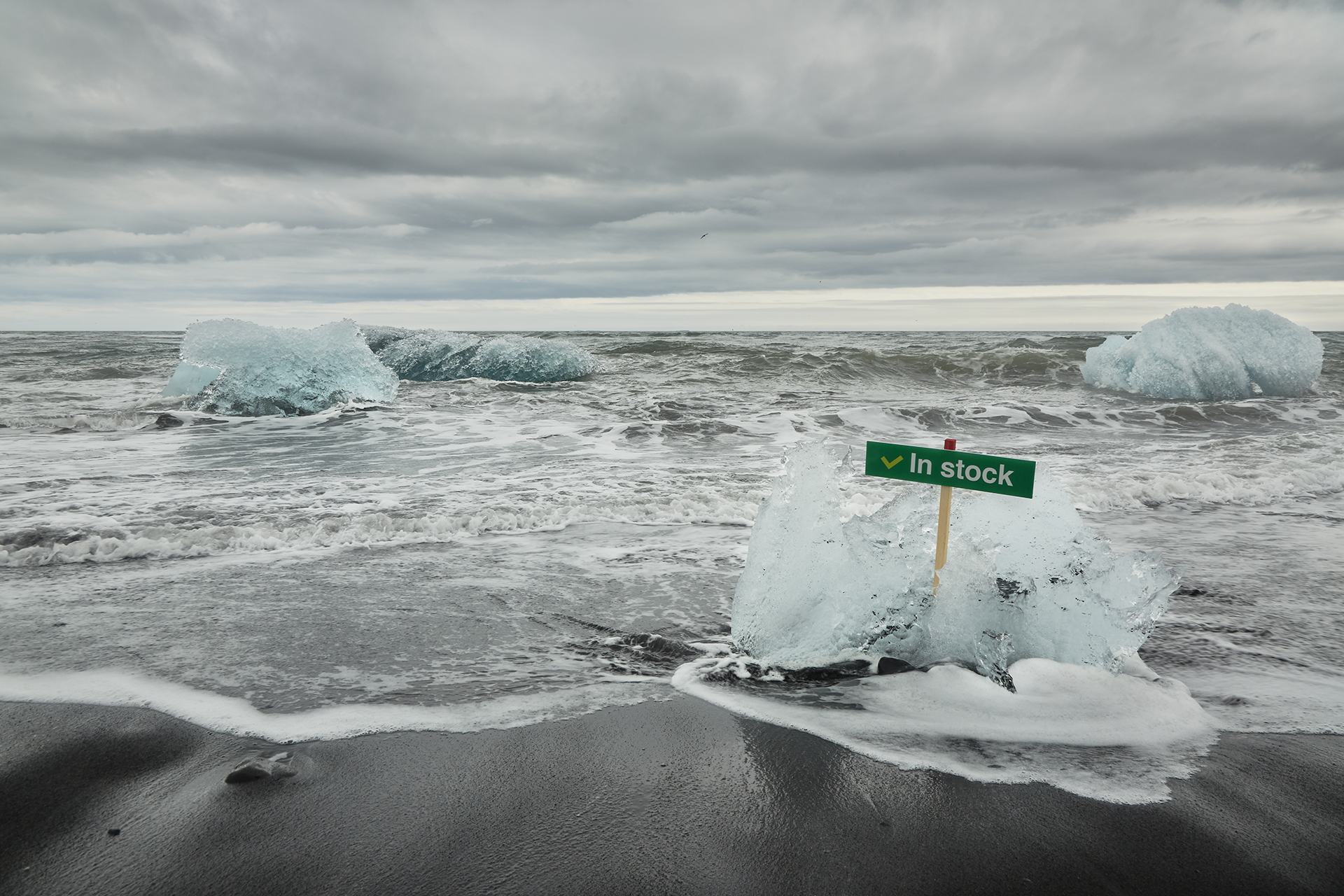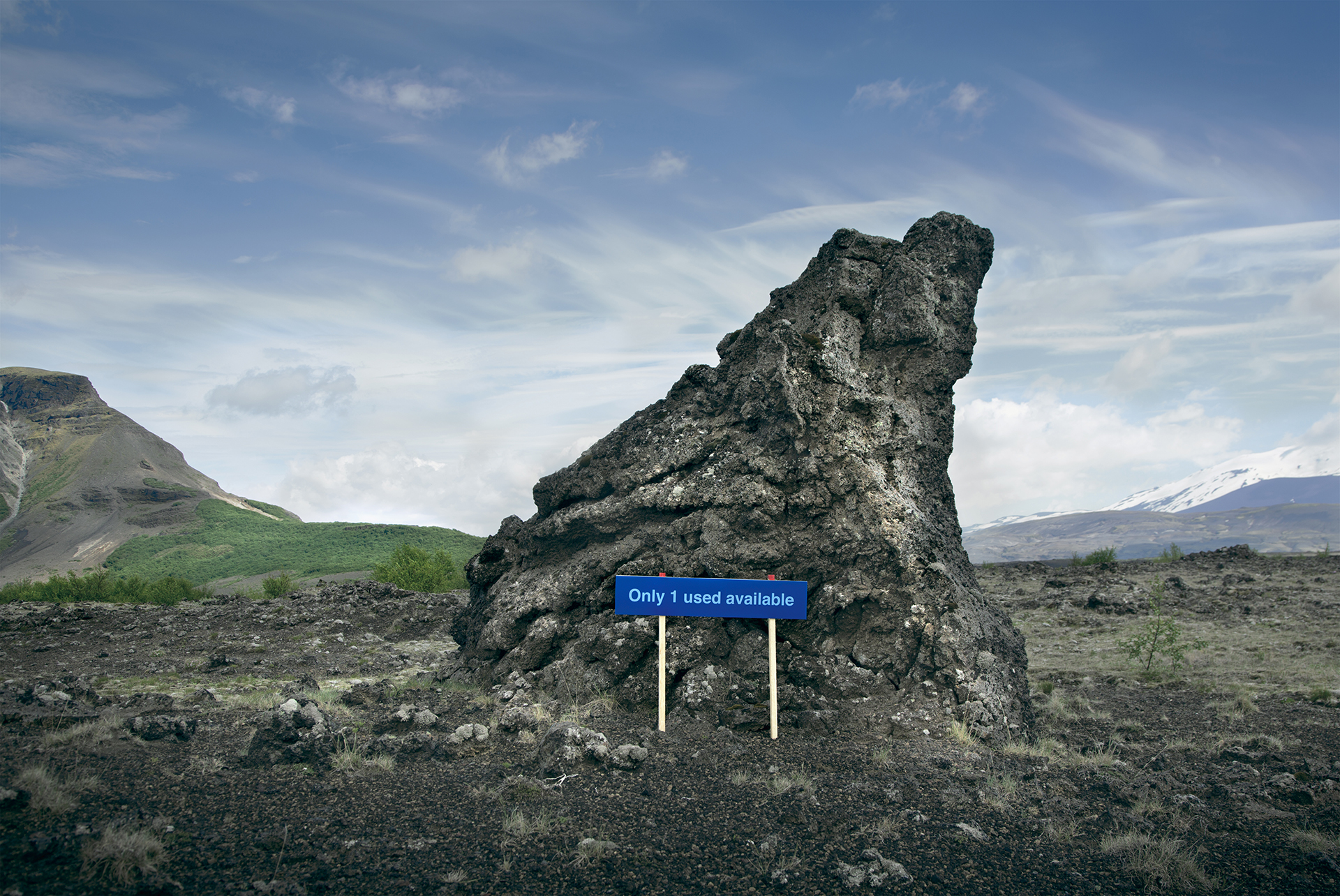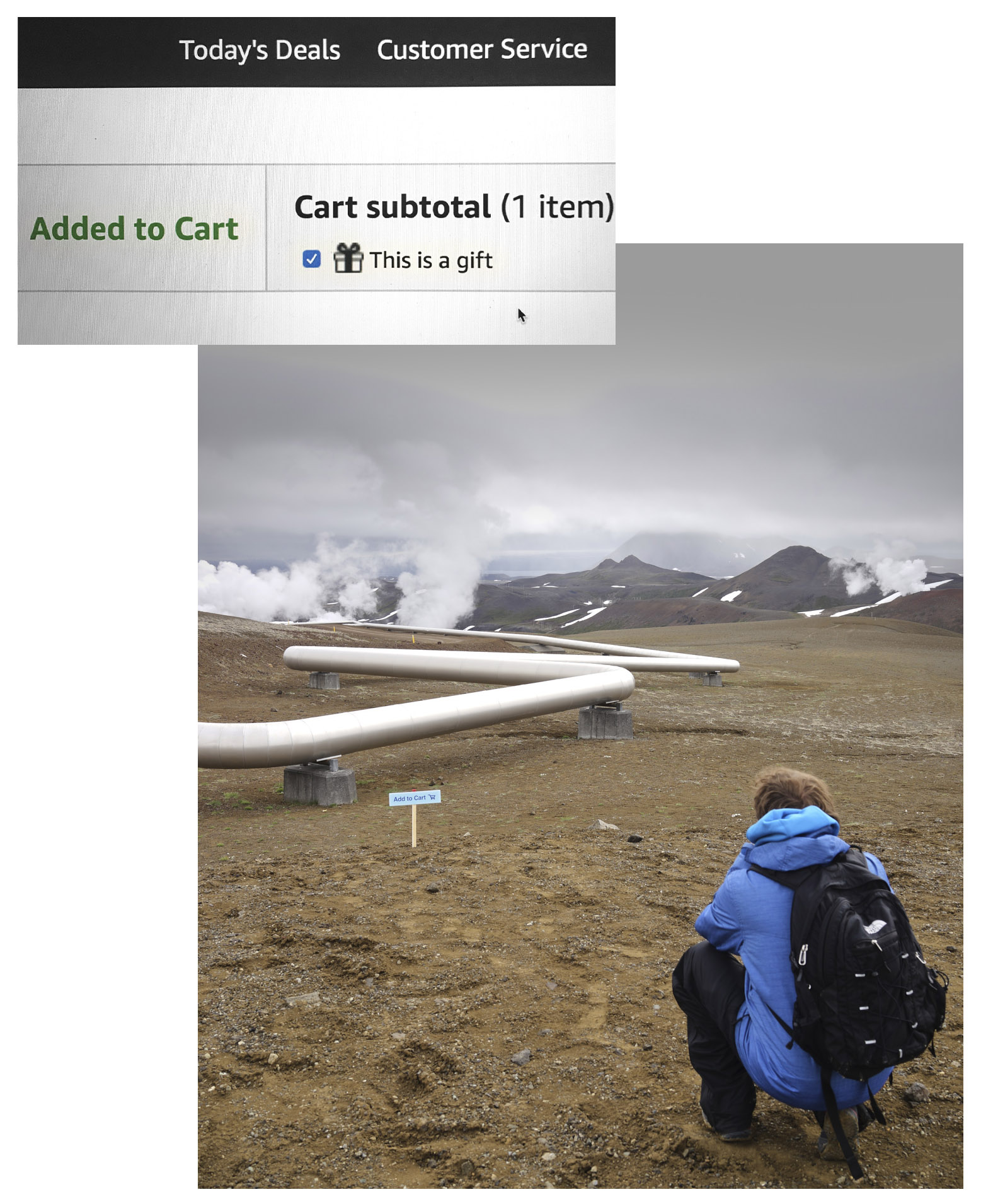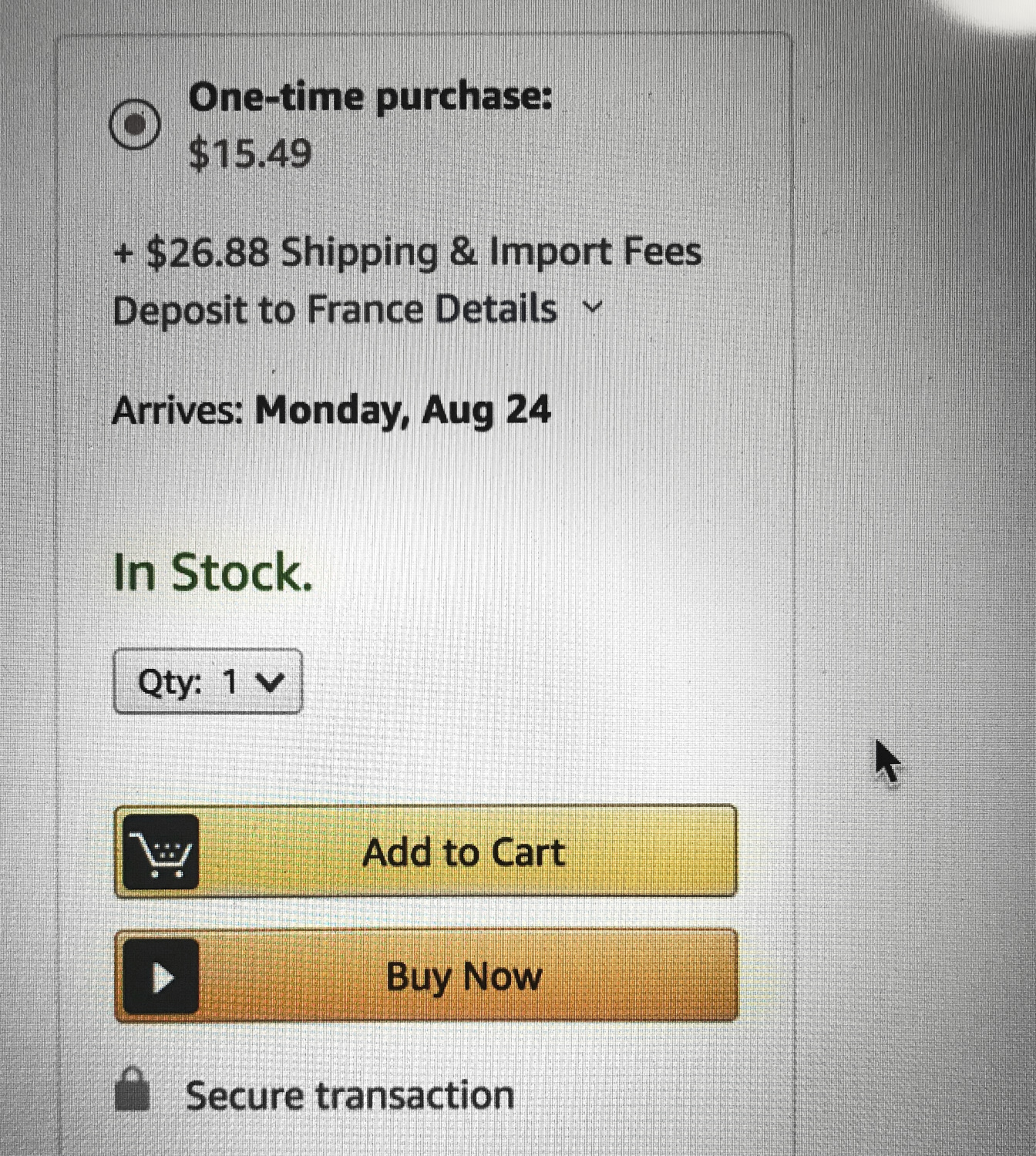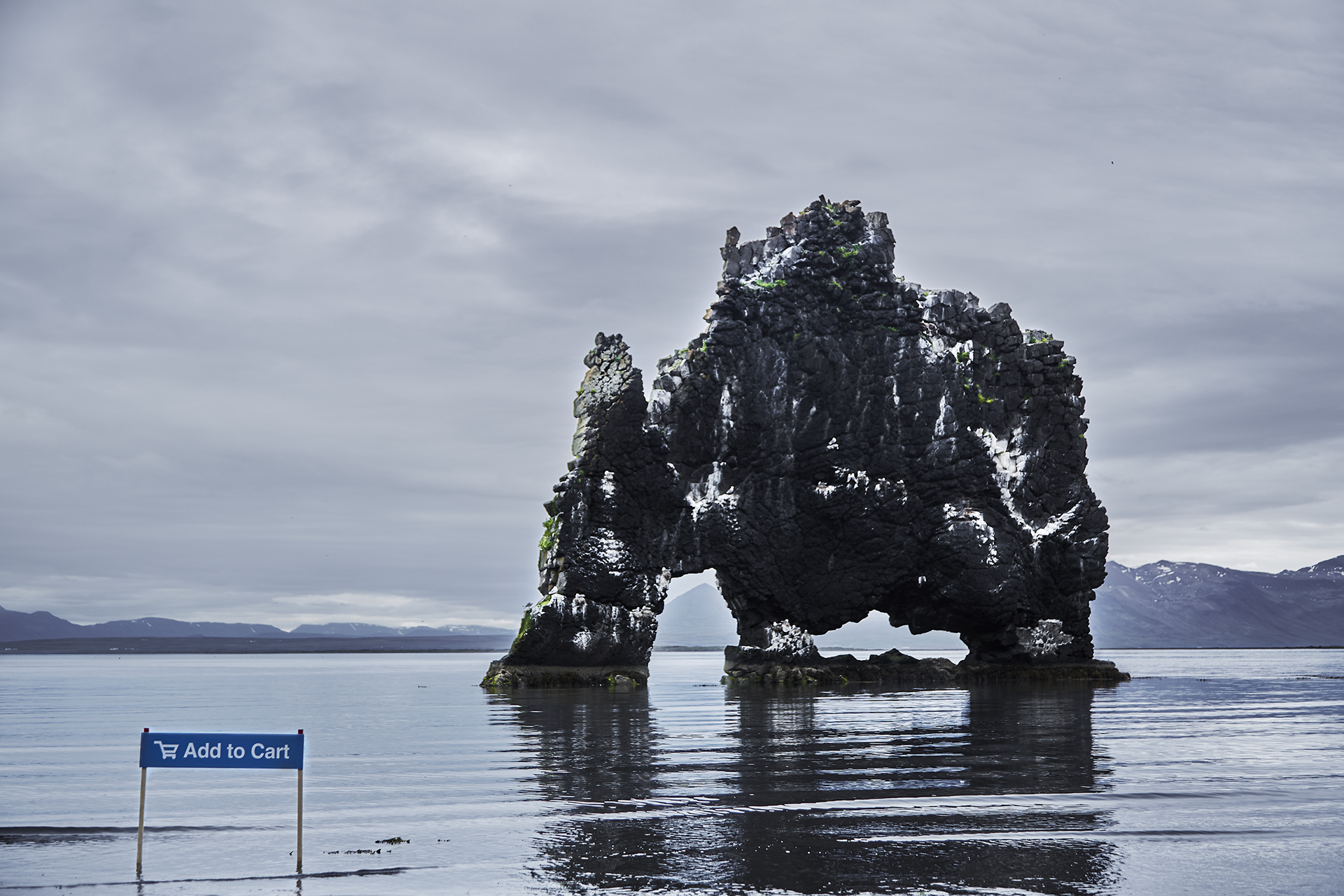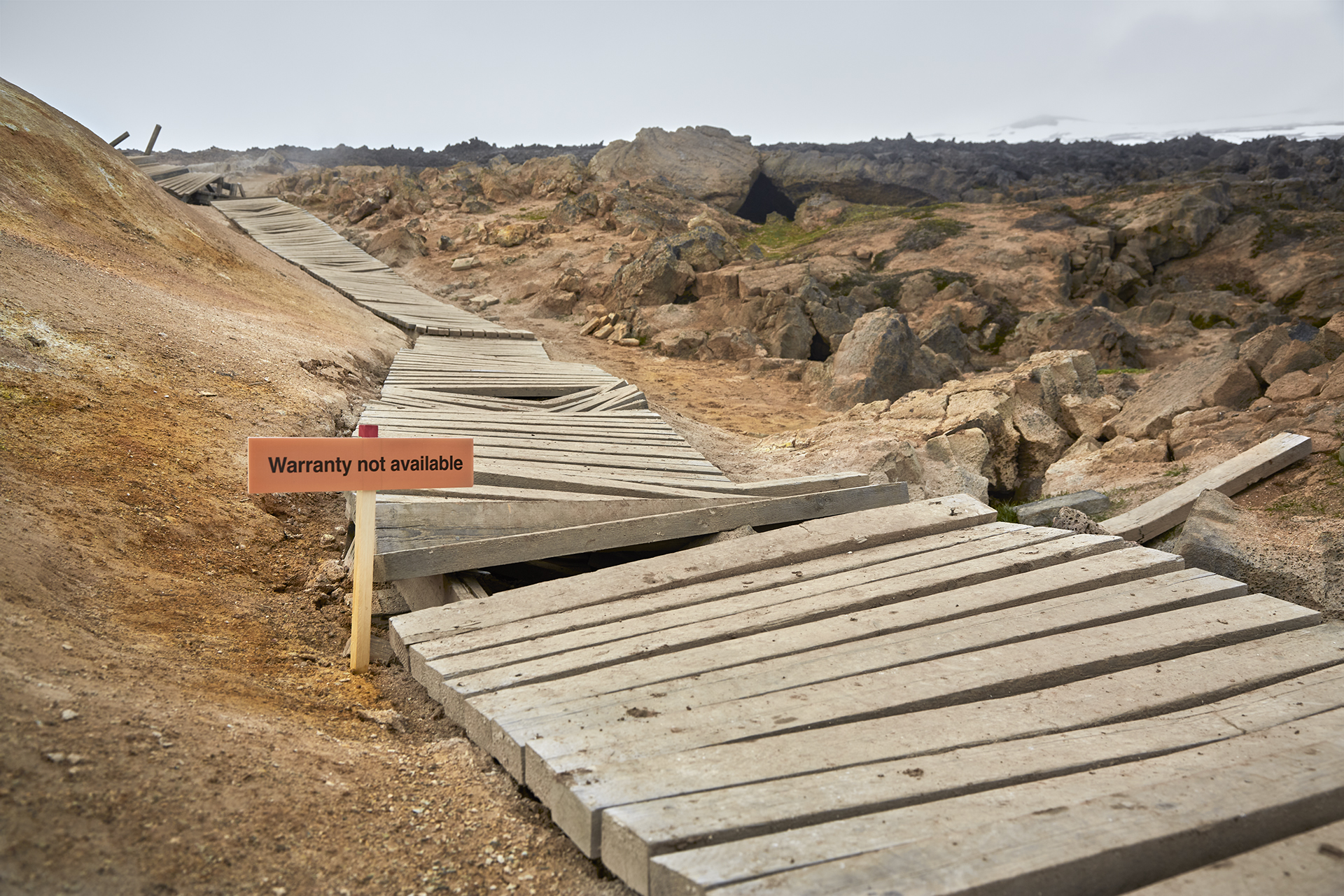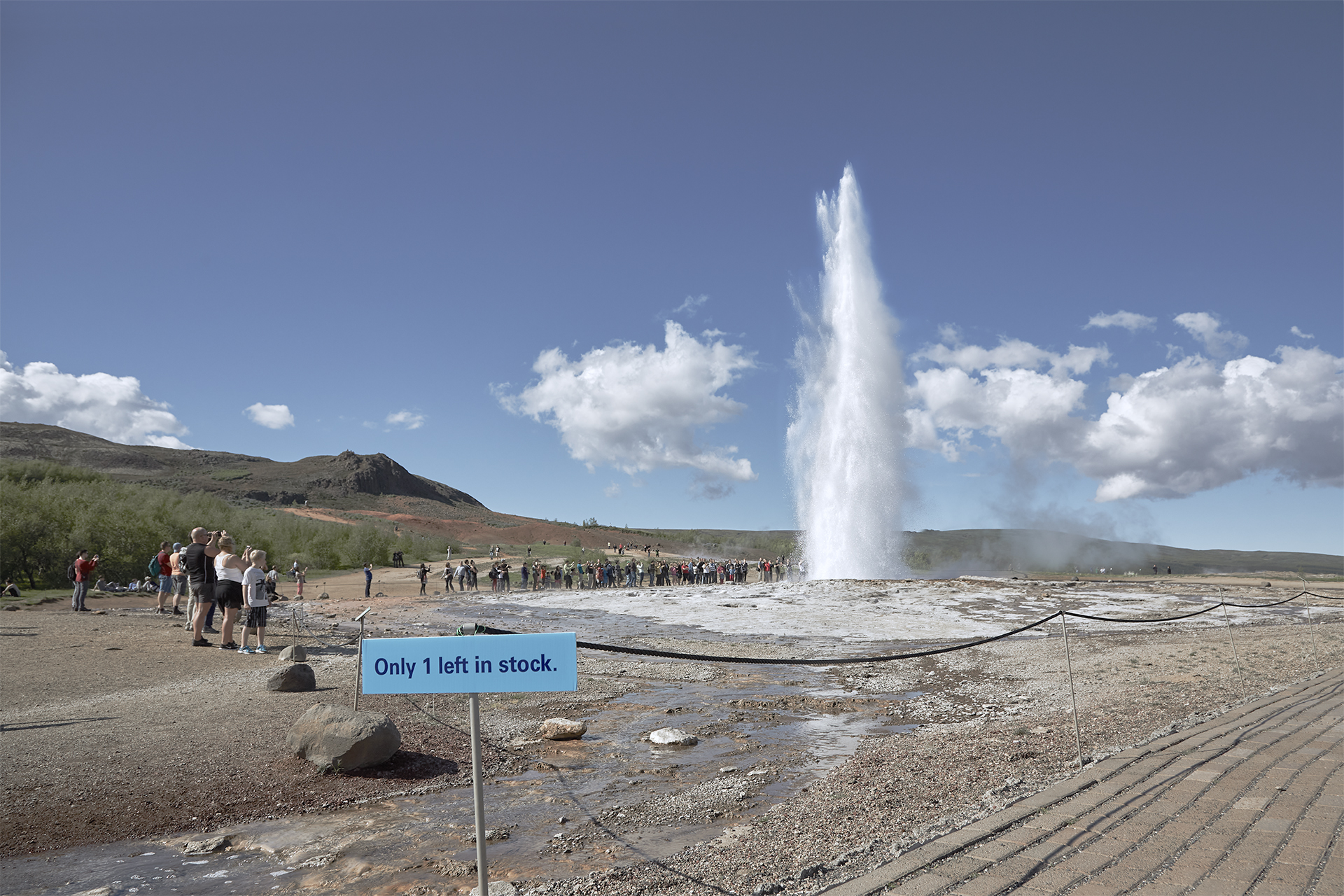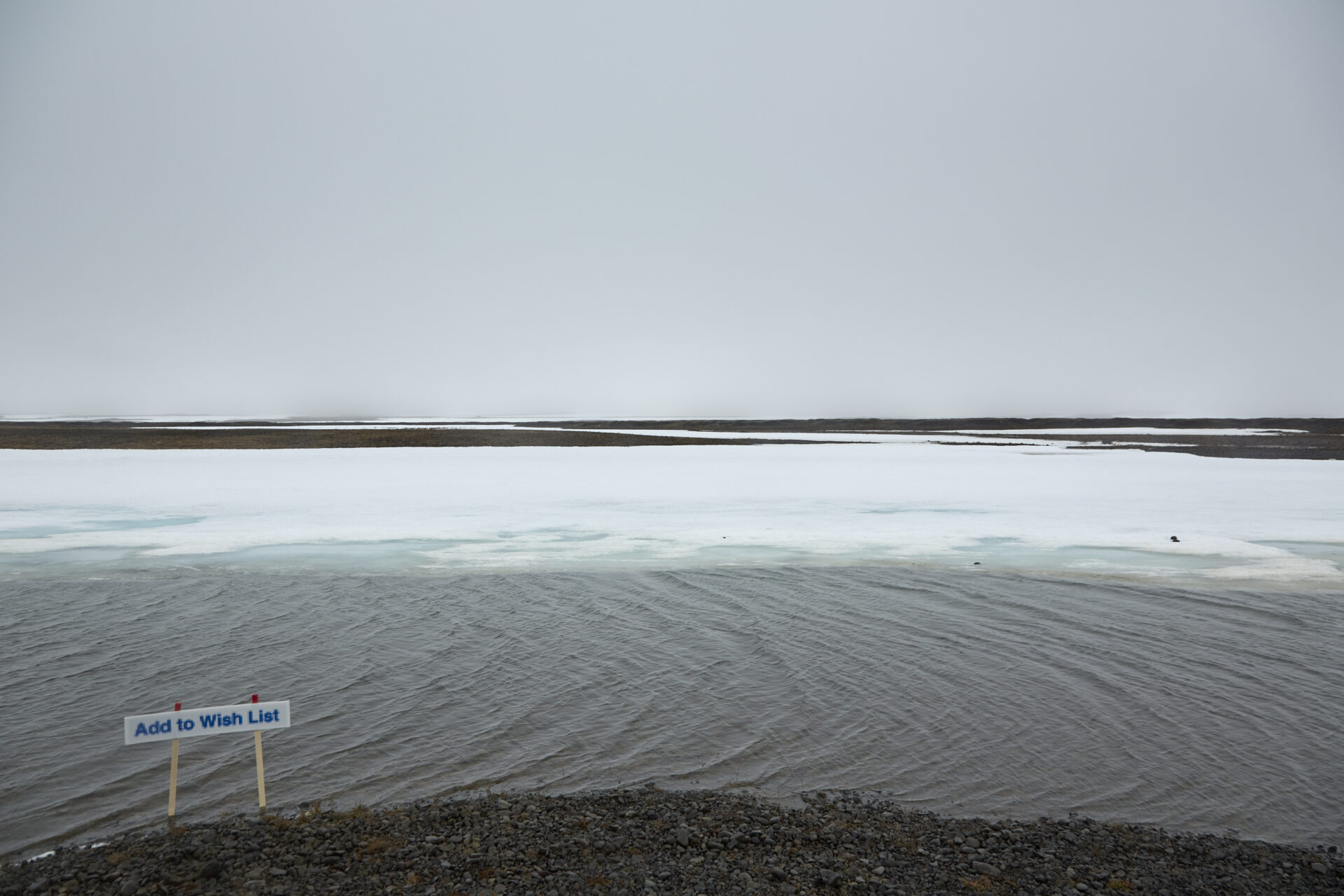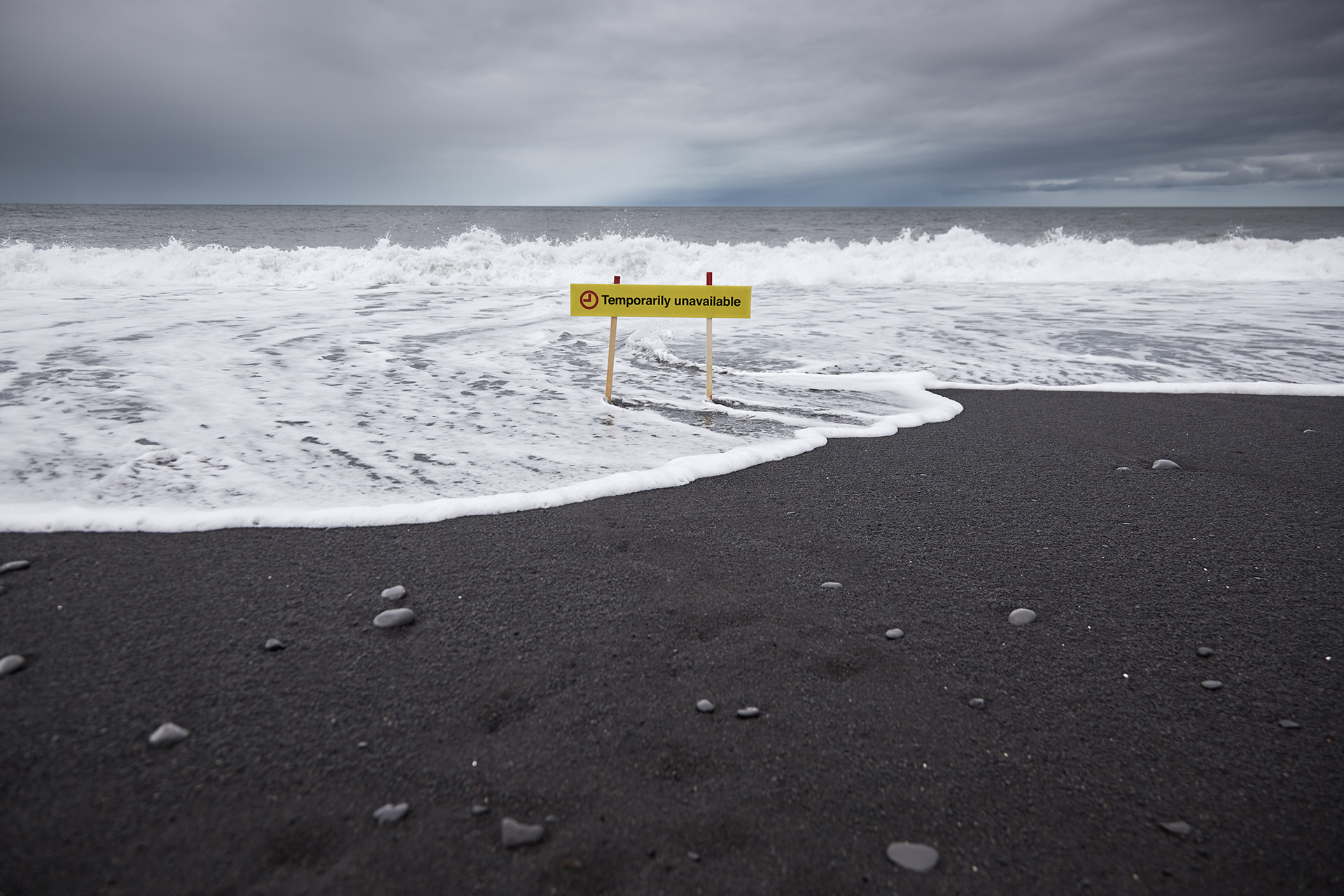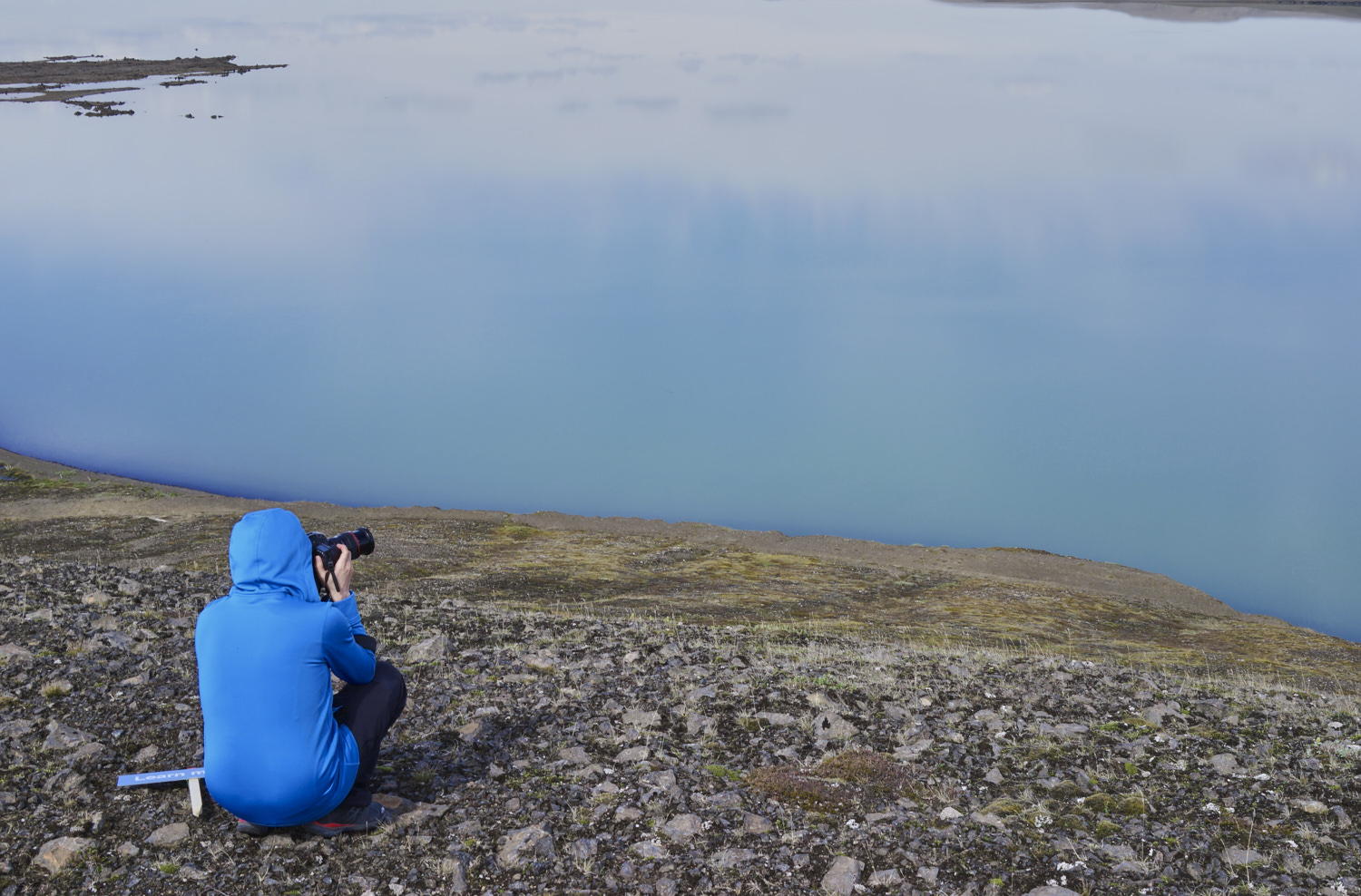This is a gift
Le projet “This is a gift” soulève la question du « devenir de la Terre en temps qu’espace naturel », menacé par la sur-consommation, l’urbanisation galopante, l’exploitation intensive, le gaspillage et l’épuisement des ressources naturelles, dans un contexte de plus en plus mondialisé et consumériste ou tout se vend, s’use, se jette…
C’est aussi une réflexion sur la frontière qui sépare d’un coté notre environnement vital diminuant chaque jour, et à l’inverse, l’espace virtuel qui se déploie chaque instant un peu plus.
La catastrophe écologique se rapprochant d’une manière certaine. Avec « This is a gift », l’absurdité du monde virtuel s’immisce dans le monde réel.
Provenants des sites marchands des GAFAM : expressions, formules, identifiants des actes d’achats, des choix d’options, des états des stocks et autres informations liés à nos habitudes consuméristes sont de simples mots. Ces mots, déterritorialisés, sont imprimés sur des panneaux de chantiers. Ensuite, ils sont implantés dans les paysages bruts d’Islande et fixés à des piquets, de la même façon qu’une maison est mise « A Vendre ». Ils transforment alors l’île et ses sites naturels en un immense site Web de biens commercialisables.
Le caractère purement informatif et fonctionnel des mots imprimés sur les panneaux devient le vecteur d’une réflexion à propos de la valeur marchande de « l’objet ».
Le caractère purement informatif et fonctionnel des mots imprimés sur les panneaux devient le vecteur d’une réflexion à propos de la valeur marchande de « l’objet ».
Les panneaux suggèrent en plus un désir paradoxal de propriété d’un espace, d’un paysage, ou d’un objet réel qui se présente ici de toute façon comme inutile, inutilisable et non appropriable, pouvant aussi rappeler l’absurdité des étoiles que l’on peu déjà acheter ou des terrains lunaires en vente…
Objet d’un désir impossible à assouvir où espace réel et hubris virtuel se téléscopent.
La fonction du mot ainsi détournée de manière ludique invite le spectateur à prendre du recul face à la création de toute pièce du « désirable ». Il le renvoie in fine à la dialectique métaphysique entre « être et avoir ».
« This is a gift » project raises the question of the « future of the Earth as a natural space », threatened by over-consumption, galloping urbanization, intensive exploitation, waste and depletion of resources. natural, in an increasingly globalized and consumerist context where everything is sold, worn out, thrown away…
It is also a reflection on the border which separates on one side our vital environment decreasing every day, and conversely, the virtual space which unfolds every moment a little more.
The ecological catastrophe approaching in a certain way. With “This is a gift”, the absurdity of the virtual world interferes in the real world.
From GAFAM merchant sites: expressions, formulas, identifiers of purchasing acts, choice of options, stock status and other information related to our consumer habits are simple words. These words, deterritorialized, are printed on site panels. Then, they are planted in the rough landscapes of Iceland and fixed to stakes, in the same way that a house is put “For Sale”. They then transform the island and its natural sites into a huge web of tradable goods.
The purely informative and functional character of the words printed on the panels becomes the vehicle for thinking about the market value of the “object”.
The purely informative and functional character of the words printed on the panels becomes the vehicle for thinking about the market value of the “object”.
The panels also suggest a paradoxical desire for ownership of a space, a landscape, or a real object that presents itself here anyway as useless, unusable and not appropriable, which can also recall the absurdity of the stars that we can already buy or sell lunar land…
Object of an impossible desire where real space and virtual hubris collide.
The function of the word thus diverted in a playful way invites the spectator to take a step back from the creation of any piece of the « desirable ». In the end, he sends it back to the metaphysical dialectic between “being and having”.
